stories,travel,eco-tourism
Chris Bray – Photographer and Conservationist
Australia
Quinn Chao October 10, 2019
Photographer and conservationist: there is not a singular word that can describe the world of Chris Bray. Since being awarded “Young Adventurer of the Year” by Australian Geographic in 2004, he has opened his own Eco-friendly lodge, sailed the Northwest Passage in the Arctic, started a photography tour business, and continues to capture every moment along the way. Chris founded The Swell Lodge, located on Australia’s Christmas Island, as an environmentally-friendly eco-tourism getaway aimed to help transform the current mining economy of the island to a more sustainable destination. When he’s not on Christmas Island, Chris splits his time between countries from Kenya to Iceland, teaching others about the art of capturing nature. His photography tours have a wide range of destinations, as Chris teaches his students the ins and outs of wildlife photography. Chris believes adventures are all about living in the moment, which explains his impressive resume and appreciation for the Earth we live on. We spoke to Chris about how his unorthodox career began, his most frightening expedition, and how his work has impacted the world around him.
Q & A WITH Chris Bray
Mood of Living: Where did you grow up?
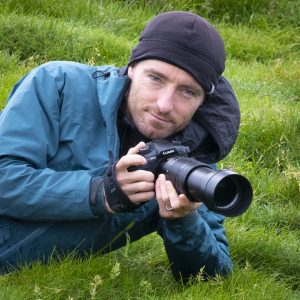
Chris Bray: I grew up sailing around the world with my family aboard our home-built sailboat for five years. It was an extraordinary upbringing which certainly taught me a love of the outdoors and nature, but also how to be practical, resourceful and imaginative – my sister and I had to make our own fun and fix things when they broke. We had to be pretty responsible too – there’s a lot of things that can go wrong on a sailboat including falling over the side which I managed to do a few times, though luckily, we were in port at the time. Haha.
Alaska
MoL: Where did you go to school and what did you study?
C.B: I did primary school via distance education – it was called “correspondence schooling” but as we had no fixed postal address and there was no internet back then, we couldn’t ‘correspond’ at all so we just read through the paperwork, did the exercises, then threw it away. It was great – it only took two hours each day and if we had any issues, my Mum could help us out right away. With a finite amount of work to get through each day before we were free, my sister and I learnt to just get it done – an ethic which when applied to my final year of primary school back in Sydney resulted pretty easily in excellent results. I was dux/first in my year for that final year of primary school and every year of Barrenjoy High School – a local public school. I was awarded a great scholarship to study electrical engineering at the University of NSW which is what I did, graduating with 1st class honors in 2006.
MoL: What was your first profession after you left school? Was what you studied in school always your passion?
C.B: The only real job I’ve ever had was washing dishes at a local pizza kitchen after school for a few years – I wouldn’t really call that a profession though, nor a passion. When I was sixteen and still at school, I started my first business (buying electronics wholesale and retailing them online, a new concept back then which taught me a lot) as well as writing and selling some software (such a nerd). Since then, I’ve only ever worked for myself, creating a diverse set of careers and companies. Ironically, photography has been my mainstay, for which I’ve never received any formal training – I couldn’t really afford the photography subject offered at high school.
I haven’t actually had to use my electrical engineering degree yet (touch wood), because I spent my scholarship funds on remote travel including chartering a plane into a remote corner of the Tasmanian wilderness and hiking out for a month, which led to bigger trips and my actually becoming a professional, sponsored adventurer for quite a few years leading world-first expeditions in the arctic and elsewhere. It was documenting these experiences that interested me in photography, as well as writing articles and a book, “The 1000 Hour Day”, now a multi-award winning documentary film “The Crossing”. By the time I’d met my wife Jess and started sailing our little wooden sailboat through the Northwest passage over several arctic summers, I’d focused more on nature photography and together we created Australia’s largest photo tour company taking small groups of people to the world’s most wonderful places. Together we’d travel to Kenya, Galapagos, The Amazon, Alaska, Patagonia, Antarctica, Namibia, Iceland, Greenland and more, almost every year. One of these extraordinary places we started running photo tours to was Australia’s Christmas Island – which I sailed to as a kid – and it’s here that we decided to create an eco-lodge.
1000 Hour Day
MoL: What motivated you to become a nature photographer and conservationist?
C.B: I was stoked to have Australian Geographic sponsor my first big adventure – down in Tasmania in 2003 – and they suggested I spend the funds on buying my first real camera (still film back then). They said if I got some decent photos they might publish an article from me when I got home. That goal really motivated me to go and read up on aperture and so on and a photographer across the road gave me a few rolls of film and my friend and I set off. It turned out to be a bigger adventure than we anticipated, so despite my photos being pretty terrible, Australian Geographic kindly still published my story, and even awarded us their ‘Young adventurer of the year’ medal for 2004. That really kick-started my first real ‘career’ as a professional, sponsored adventurer.
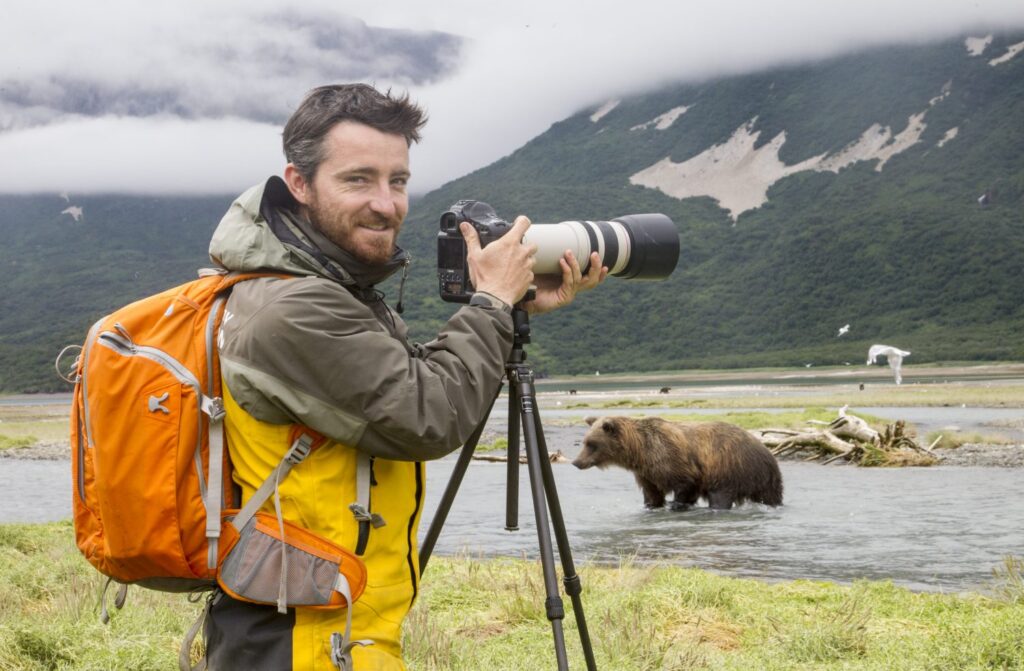
MoL: What draws you to an adventure?
C.B: It’s complicated – I think perhaps adventure is so appealing precisely because there are so many facets to it – it’s not just one aspect. A lot of people assume I must be an adrenaline junkie – that I do it for the rush – but nothing could be further from the truth. Before I set out on an adventure and every day while I’m out there, I spend a huge amount of my efforts in identifying all the possible risks and how to mitigate them down to an acceptable level – or ideally remove them entirely. If I wanted adrenaline I’d be a base jumper (though I have some friends who do that and it turns out there’s more to that too, haha! I’ve never done it, and don’t really want to!). For me, I love that in my kind of adventure you’re forced to live in the moment, to really hone all your senses to see and feel what’s going on around you, and that you have to make decisions that can have very real consequences. It sounds horribly cliched I know, but it really does make you feel more alive. It’s pretty motivating to wake up every morning not knowing what you’ll see and do today, only that it’ll be full of extraordinary possibilities.
I remembered a quote I always used to write for this kind of question, back where I wrote “….not knowing what you’ll see and do today, only that it’ll be full of extraordinary possibilities.
I’ve learnt a lot of skills on my adventures. On an adventure, life can become both wonderfully simple and brutally honest. I’ve learned to fix what can be fixed and abandon what can not – both mental and physical.
I’ve also learned a lot about myself and perhaps most importantly and enduringly, they’ve taught me self-confidence. As I said, I used to be a nerdy little shy kid at school.
Kenya
MoL: Where have you traveled that inspired you the most and why?
C.B: I’m lucky enough to have traveled to many inspiring places, each so different that it’s hard to pick a favorite. The region that has lured me back again and again however is the Arctic. People think Antarctica is awesome – all that ice, history, whales, seals and penguins – but the arctic has four of those five – you’re just swapping out penguins for puffins, aucklets and way more birdlife, as well as getting polar bears, wolves, muskox, caribu, arctic fox, the same whales plus narwhals, beluga, walrus and so on as well as the Inuit culture and wonderful communities – and its way more accessible than Antarctica! The Arctic is of course a huge place and can be quite barren and brutally unforgiving, but it’s also spectacular and largely pristine. It’s a great place to explore.
MoL: What have been the most frightening and awe-inspiring adventures you’ve been on respectively?
C.B: Besides trying to create an eco-lodge on the far side of one of Australia’s most remote islands, I’d have to say my most frightening and awe-inspiring adventure was with my wife Jess, becoming the first people to successfully sail a junk-rigged sailboat through the infamous Northwest Passage in the Arctic above Canada and Alaska over the course of about 3 summers. I believe we’re also the youngest couple to ever sail through on any boat. In 2010 we made the mistake of buying a cheap, 29-foot long, junk-rigged sailboat made of rotten wood in Canada on an interest-free loan, sight-unseen. While also starting our photo tour company, we spent a summer rebuilding her and then set off up the coast of Canada and then headed across towards Greenland. Midway we got caught in a pretty terrifying storm that lasted 2-3 days, with 12-meter waves and force-12 winds. Our main water bladder ruptured, spilling almost all our drinking water into the bilge where it automatically got pumped out over the side; the windows started to leak, and the very structure of the boat crunched and groaned with each wave that exploded over us leaving me to pack and re-pack our emergency grab-bag while reassuring Jess (who was frighteningly incapacitated from being sea-sick to the point of dehydration) that everything was fine. She’d never been sailing before. Miraculously we survived and made it to Greenland, but couldn’t get in to shelter as the coastline was jammed with ice for five more days sailing north. That sucked. But the west coast of Greenland was spectacular, and then across to Baffin Island and we weaved our way through the Arctic Archipelago – that tangled mess of islands above Canada. Half way through we had to build a cradle and drag the boat up onto a hillside and leave it for the winter, safely out of reach from the crushing ice when the ocean froze over. After running more photo tours etc., we came back the following summer when the ocean melted and kept going. Every summer for 5 years we sailed onward, to Alaska, down the Bering strait, and back to Canada again. It was a wonderful – and at times terrifying – an adventure to do together.
Teleport
MoL: What have you learned from the people you meet around the world?
C.B: Oh, so much. Both generally, such as starting to understand the seemingly inexplicable happiness of communities who have so very little and yet are so generous, through to specific individuals who have taught me so much about everything from business to love. It’s wonderful that almost everyone you choose to engage with in life weaves another thread into the rich tapestry that forms not only your story, but also leads you to react differently to decisions in your future. I feel we’re all basically the combination of all the people we’ve met and have chosen to learn from – the more and the more diverse, the better. I can’t even begin to list the endless lessons I’ve learned – suffice to say perhaps you only live once and there’s a lot to learn, so make the most of it, and do your best never to take anyone or anything for granted.
MoL: What inspired you to create Swell Lodge- your eco-friendly, luxury lodge on Christmas Island, Australia?
C.B: I first visited Christmas Island as a kid of 7 years old – it was the first place we sailed to after mainland Australia on our circumnavigation. I remembered it as a tropical paradise filled with rare and unusual birds and crabs in the jungle, and spectacular snorkeling in the crystal-clear, warm waters. Decades later looking for new and interesting destinations for our growing photo tour company, Jess and I returned in 2013 to see if it was as wonderful as I remembered. To my delight, it was even better. It’s Australia’s best-kept secret and we ran sold-out photo tours there every year since then. All Christmas Island was lacking to shift its mine-based economy towards a more sustainable, environmentally-friendly future of eco-tourism was some kind of high-end, eco-friendly accommodation options like those we take our guests to all around the world. It just so happened that in 2016 the Australian Government put out a call for expressions of interest for someone to create some kind of accommodation inside the amazing National Park on Christmas Island, and so we pulled together all the insights we’ve gained from staying at other lodges and submitted a proposal, along with some other companies. To our amazement, ours was the only project granted even preliminary approval. A year of paperwork, environmental impact assessments, ecologist surveys etc. followed, and in 2017 we started building the first eco-chalet, right on the sea cliff overlooking the ocean – it’s one of the most beautiful places in the world. Take a look: www.SwellLodge.com
Swell Lodge
MoL: How has your work impacted the world in a positive way?
C.B: I remember there was a question like this on the first Australian Geographic sponsorship application form I ever filled in, and it floored me. How could a kid hiking in the wilderness possibly help Australia? “Of course, it does!” A mentor told me, “It inspires a new generation to adopt a healthy, outdoor lifestyle and your documenting and sharing the beauty of these far-flung places which most people don’t get to visit goes a long way to raising awareness and subsequently care about such pristine places – it’s important!” I wanted to believe it, so that’s what I wrote. As it happens, it is true. Even following that first adventure I was presenting sold-out motivational lectures, then passing on lessons learnt from ‘decision-making when lives depend on them’ for final year engineering students, and these days I get a constant flow of delightful messages from all over the world. Some are inspired by one of my various adventurers and have perhaps channeled that to overcome some obstacle in their own lives or have headed off on their own life-changing adventure; others have gained such an appreciation for wildlife and wild places through my photos and photo tours that they have become conservationists; others have simply discovered a hidden joy in photography after watching my free photography course videos online that they write to me just to say thank you for making their lives richer. My photos have identified species thought to be extinct and when leading our photo tour around the world, we’re able to donate to local critical conservation efforts to help to give back and preserve the fragile environments we bring our guests to witness. I try to weave in conservation messages into many of my social media posts to help educate people about the threats facing the natural world and with my new charity Conservation United, I hope to be able to help direct meaningful amounts of money to the most worthwhile conservation causes around the world.
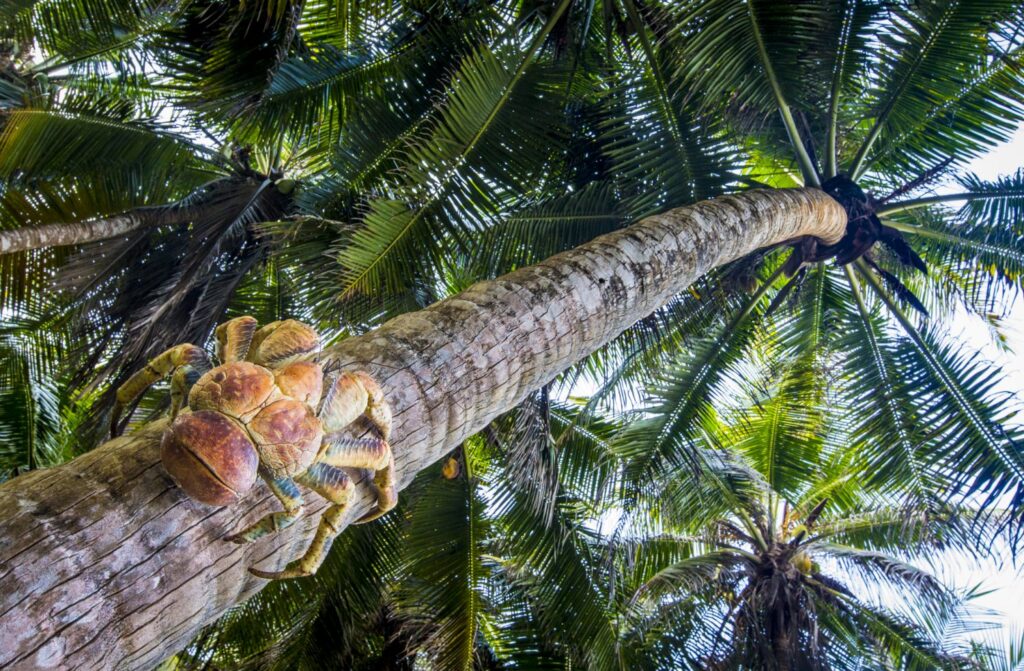
Christmas Island
MoL: What are your future goals?
C.B: Right now, I’m finishing the first stage in creating Swell Lodge, a luxury eco-lodge inside the National Park on Australia’s tropical paradise of Christmas Island, in a bid to help the island move from a dwindling phosphate mining economy to a more sustainable and environmentally-friendly eco-tourism future. I imagine that’ll take a year or so to grow to the level where it can make a real difference, but already we’ve had success. Longer term, I don’t know really – in hindsight my life appears to make sense – the lessons, growth and contacts from one project flowing logically on to the next opportunity that has popped up, but I could have never predicted any of them in advance. If you’d have told me while I started studying electrical engineering that I’d soon be hauling carts across a frozen arctic wasteland which would lead to me running wildlife photography tours around the world and then hand-building the first eco-accommodation inside any federally-managed National Park in Australia on one of the countries most remote territories, I’d never have believed you. So, I don’t really know what’ll be doing a few years from now – I can only hope that it’ll be as exciting, engaging and rewarding as the projects I’ve been lucky enough to have done so far. Hopefully starting a family will feature in there somewhere, along with some more high-latitude sailing and somehow making a difference. In terms of photography, I’ve just made the swap from using Canon DSLR gear to Panasonic’s Lumix GH5 – a mirror-less, micro-four thirds powerhouse that’s opening up some cool new possibilities, so that’s very exciting! I’ve just spent the last few days wiring one up inside a small hard case with a motion and proximity sensor to try and get some unique new camera-trap angles on my upcoming photo tours. I can’t wait!
Galapagos
MoL: Tell us about your school and photography tours… What impact does it have on your customers?
C.B: Having just come back from my arctic sled hauling expedition, broke and trying to work out what to do next, a friend got me a volunteer role aboard a cruise ship heading to Antarctica in 2008 as their official photographer (basically because their usual photographer was sick and I at least had ice experience and had been sponsored by Canon). On the way, I noticed that although many passengers had amazing camera gear, most were wasted on ‘Auto’ mode. To fill in time, I created a photography crash-course lecture to explain the basics, attended by everyone who wasn’t seasick. They loved the way I explained things and several guests asked me when I was giving my next course back in Australia. Thinking on my feet, I told them I didn’t have the exact date yet, but if they’d like to add their email address to this list, I’d be sure to let them know. As soon as I got home I spent the next 6 months creating what I hoped would be the ultimate 1-day photography course, convinced Canon, Lowepro and Australian Geographic to partner up, borrowed some money from my girlfriend Jess to hire the Taronga Zoo function centre in Sydney and ran my first course in June 2009, attended mostly by those cruise guests as well as the photo-editor of Australian Geographic magazine! They were a huge success – attendees loved my simple explanations and practical approach without unnecessary theory or jargon, coupled with the hands-on, 1-on-1 sessions out in the zoos to help them really understand each key aspect, and soon we were running them in almost every capital city in Australia 3-4 days each week.
Within a year I became Canon’s Australian ambassador for digital photography, Lowepro’s Aussie ambassador and the first photographer Australian Geographic ever sent on assignment overseas. We went from strength to strength and employed staff to run many of the courses for us, freeing us up to evolve into running luxury, small-group photo tours to the world’s most wonderful places including Kenya, Alaska, the Amazon, Galapagos, Iceland, Patagonia, Greenland, Namibia, Antarctica, Norway, Botswana etc. as well as domestic jewels like Tasmania, Kangaroo Island, Christmas Island and so on. We’re now Australia’s largest photo tour operator and our global reputation attracts repeat guests from all around the world. We now even have an excellent team of photo tour leaders running trips for us – right now for example we have a team leading a sold-out photo tour in Iceland and Greenland, while I’m heading to Alaska. Apart from our unpretentious, easy-to-follow tuition, I think there’s a few aspects that set us apart from our competition: Importantly, our photo tour leaders (including myself) are there purely to help our guests learn and help our guests get the best possible photos – not take them themselves. We spend ages finding the very best wildlife locations around the world, away from the crowds and then work out how to bring our small group of usually just 8 guests and two photo guides there in luxury – chartering private planes, helicopters and mini expedition ships with private chefs and staying in the best remote lodges etc. For example, my wife and I literally sailed every inch of the Alaskan coastline in our little sailboat over 4 arctic summers to discover all the hidden bays and islands where the bears, sea otters, puffins, whales, glaciers etc. make for the best, most unhurried, pristine photography experiences possible. Now utilizing a network of small craft, remote lodges, planes and a mini-expedition research ship which we had re-designed for our needs, we now offer the most incredible Alaskan experience that exists, way more intimate than the usual 2,000-person cruise ship hulk churning through the usual ‘inside passage’, visiting places that most tourists just never get to see. Even non-photographers love the unforgettable experience we offer on our tours, and most trips are about 70% filled with repeat guests so we must be doing something right! We also genuinely respect and care about the wildlife and their environment, and I think our guests appreciate that. We and our staff are now so busy running photo tours that we don’t really have time for our courses anymore. Instead, I decided to film my complete 1-day photography course in a studio and edit it into a ten-part video series which I recently put online for free. Already, they’ve had more than a million views and we’re selling loads of course books to go with it, ibooks and so on, as well as replying to a wonderfully heartwarming flow of beautiful comments from around the world from people who’ve unlocked so much happiness from their improved photography as a result of my videos. It’s really pretty rewarding.
Iceland-Greenland
MoL: What has been your favorite moment to capture on camera?
C.B: That’s a bit like asking what’s someone’s favorite song – it changes all the time. Inevitably I eventually get bored with one favorite, especially if I have just had fun capturing something new and exciting. I’ve had a few stand-out moments that have been particularly successful: a lion cub coming up pawing and roaring at my GoPro attached to a toy car which has been used in everything from GoPro adverts on TV to LG adverts in a train station in Korea; a pair of large male Komodo dragons battling that’s been used by Discovery Channel and National Geographic in documentaries; placing a camera inside the carcass of a buffalo killed by lions and waiting for them to return as well as a beluga whale carcass while polar bears marauded around; a cheetah jumping on top of our car; the extraordinary scene of a billion baby red crabs drifting in from the sea and carpeting the shore of Christmas Island in a moving red carpet heading up into the jungle… That’s had well over a million views online. I’ve also missed what would have been some spectacular footage, most disappointingly, wild wolves playing with my friend and I in the Arctic. Agh well!
MoL: How do you maintain your work/life balance?
C.B: From the outside looking in on my Instagram account, it can look like my life is an endless holiday to the most wonderful places in the world, but of course that’s not entirely true. I like the freedom of being my own boss, following my own passions and getting out exactly what I put in – I find that very motivating – addictive, even. However, working for yourself from home also means there’s very little down-time – it’s almost impossible to ‘leave work at work’ when you come ‘home’. Luckily, I love what I do, but that still doesn’t mean that I – or especially those around or close to me – can go indefinitely without a break. To be honest, I’ve had a pretty terrible work-life balance for the last decade as there’s always things to do and no matter how hard I work or how late I stay up, I’ll never actually get through my To Do List, ever. Realizing and importantly accepting this reality has been key to my starting to establish something akin to a work-life balance. My projects are so varied that I can’t lock in regular work hours or give myself weekends off or anything like that, but I now allow myself to take a break when the mood strikes, to go for a run, read a book or go free diving – something which is about as close as I get to meditation which helps me to maintain my sanity. We also try and schedule in a few extra days at the end of our photo tours to enjoy the places we’ve just been guiding, and last month my wife and I even went for our first real ‘holiday’ together, without guests, to a location we had no intention of scoping out for future tours. Crazy, right?! Haha. I’m also trying to adopt the mantra of ‘Progress – Not Perfection’ as well as get better at delegating.
Kangaroo Island
MoL: What advice can you give someone interested in pursuing a career like yours?
C.B: My career path has been pretty unorthodox and has taken many unexpected turns which mostly came about from grasping chance opportunities at the right time and making the most of them, coupled with a firm desire to ‘be my own boss’ rather than work for someone else. Unfortunately, there is no road map I can offer, beyond trying to find something you’re interested in and enthusiastic about, then you won’t mind putting in the dedication to really succeed. Along the way, go out of your way to meet interesting people, network with them and find a reason to keep in touch. The old adage ‘It’s not what you know, it’s who you know that counts’ is actually true a lot of the time when it comes to opportunities – even if you’re working for yourself or your own company – and it’s these opportunities which can be shortcuts to the usual, established route of first having to getting a degree or enduring years of working for someone else in an industry to gain experience before you can do what you really want to do. If you’re hoping to start your own business then unless you’re independently wealthy, you have to be realistic about how to morph your ideal ‘job’ with a strategy that will actually allow you to earn a living from it. The world’s full of people who’d love, for example, to be ‘a wildlife photographer’ – I get emails from them all the time. Unfortunately, hopping to fund the purchase of pro camera gear – let alone fund your endless travels to the world’s most remote and wild places – simply by selling your animal photos later on to your non-existent audience just isn’t going to happen. It needs to be a viable business, not just a dream. If it was easy, everyone would do it.
Norway
MoL: Words of wisdom?
C.B: I’d love to have come up with my own inspiring quotations, but I just can’t do better than these two, which I’d like to pass on: “Don’t follow your dreams – chase them.” and “If you’re not living for something, then you’re dying for nothing.” Also, a friend and very successful businessman Dick Smith once told me his three pieces of advice for creating a successful business: 1) Copy the success of others, 2) Ask lots of advice, and 3) Surround yourself with capable people.
Photography courtesy of Chris Bray
Also of Interest
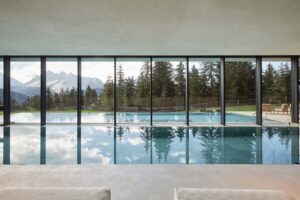
FORESTIS – A Luxury Eco-Conscious Retreat
FORESTIS is a luxury, eco-conscious retreat nestled in the beautiful Dolomite Mountains of Italy.
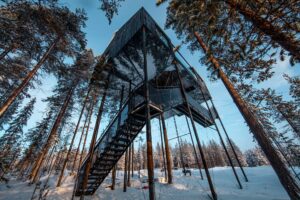
Treehotel — Swedish Tree Houses Integrated in Nature
How Kent Lindvall and Britta Jonsson-Lindvall created eight unique Swedish tree houses, interweaving design and sustainability.
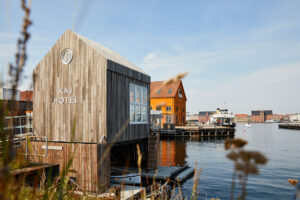
KAJ Hotel: A Sustainable Micro-Hotel in Copenhagen
KAJ Hotel is a sustainable, simple two- to four-person houseboat hotel located in the Holmen neighborhood of Copenhagen, Denmark.
